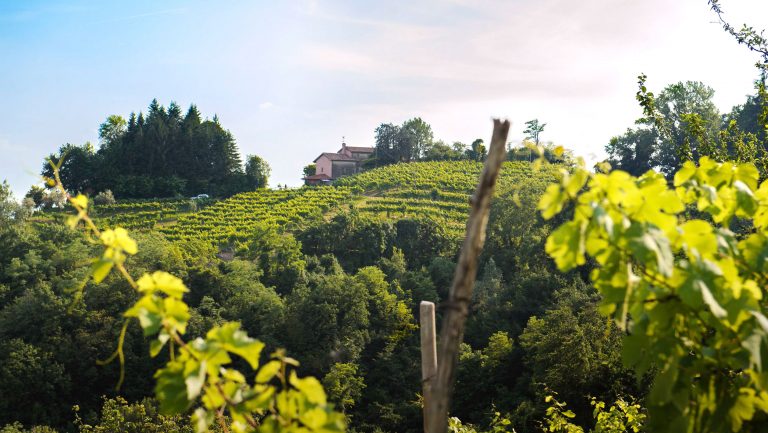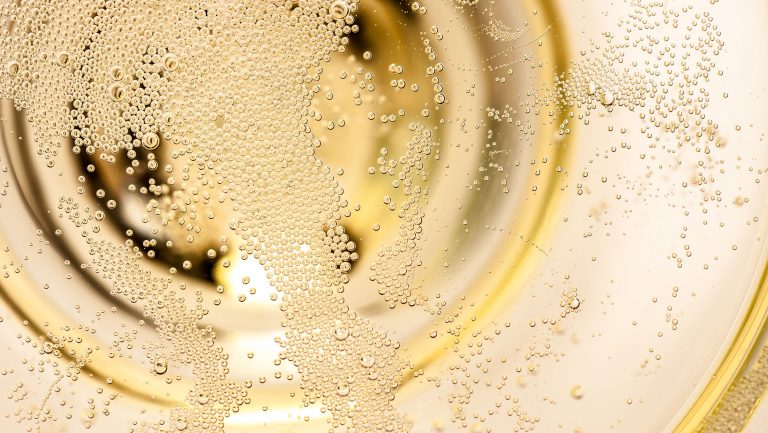When we talk about modern sparkling winemaking, it’s generally in reference to one of two methods: traditional or Charmat.
In many wine circles, the traditional method—also known in Champagne as the méthode Champenoise—is held to a higher regard. Regions in which the traditional method is mandated, such as Champagne, Cava, and Franciacorta, often point to it as an inherent marker of quality and ageability. Charmat-method bubbly, on the other hand, is generally associated with being light, fruity, and youthful—fresh and fun, but not necessarily serious.
However, a growing number of Charmat-method sparkling winemakers in Italy, Brazil, Argentina, and beyond are finding there’s a way to make sparklers that meet somewhere in the middle. By using what they refer to as the “Long Charmat” method, involving extended lees contact and a longer secondary fermentation but still taking place in tank, they’re hoping to attract more attention and renown for their sparkling wines.

Don’t miss the latest drinks industry news and insights. Sign up for our award-winning newsletters and get insider intel, resources, and trends delivered to your inbox every week.
The Difference Between Charmat and Long Charmat
The secondary fermentation vessel is often considered the most obvious distinction between the traditional and Charmat methods of sparkling winemaking—a bottle for traditional, a tank for Charmat. But the methods differ in terms of secondary fermentation and lees aging time as well—and this is where Long Charmat incorporates elements of traditional-method sparkling winemaking into Charmat-method sparkling winemaking.
Traditional-method sparkling wines generally spend at least nine months aging in bottle in contact with their lees, though some producers choose to age their wines on the lees for a decade or more. When aged on the lees, the wine benefits from the process of autolysis, during which the yeast releases different compounds that modify the taste, smell, and texture of the wine, enhancing a wine’s mouthfeel, body, and complexity. The longer it’s on the lees, the more time there is for carbon dioxide to escape, resulting in smaller, finer bubbles due to there being less dissolved carbon dioxide in the wine.
But part of the appeal of the Charmat method is its speed; extended lees aging is not classically part of the process. In Prosecco—the region that the Charmat method is most widely associated with—wines are only required to spend a minimum of 30 days in tank. While it may not be regulated elsewhere, a short time in tank has become standard practice for other regions who have followed suit in making Charmat-style bubbly. Because their second fermentation happens in a tank—and for such a short period of time—Charmat-style sparkling wines tend to be fruitier with larger bubbles, without the beloved bready and brioche notes expected from traditional-method sparklers.

A technique that has emerged over the past five to 10 years, Long Charmat combines the lees contact of the traditional method with the tank format of Charmat. In Prosecco, where this extended aging process originated, Long Charmat wines typically spend a minimum of six months in tank. How the process is interpreted in other regions varies. “It’s a way of getting an intermediate style between classic Charmat style and traditional method,” says Brazilian sommelier and wine educator Mauricio Roloff. “When you have that aging and contact with the lees, generally from three to 12 months, you get a different mouthful, a different palette of aromas, the mousse is way more complex. You get bolder sparkling wines.”
Expanding Consumer Tastes in Brazil
It’s those bolder, complex notes that have winemakers like Lucas Foppa of Brazil’s Tenuta Foppa & Ambrosi so excited about the Long Charmat method. “It’s very interesting because you can do a process very close to what you do with battonage. You can shake the lees, get the sparkling wine smoother … You can also extract a little bit of those toasty flavors that we love in traditional-method sparkling wine,” he says. And yet, with Long Charmat, you also “keep the freshness.”
Being able to experiment with time in the Charmat method has been key to the success of Tenuta Foppa & Ambrosi, launched in 2018 by two young winemakers. The brand isn’t yet big enough to justify the expenses of the labor-intensive process the traditional method of sparkling winemaking entails—nor do they want to make their wines in this way. “We specifically chose the long-term Charmat method because [it aligns with] the style of wine we want to produce,” says Foppa, who ages Tenuta Folla & Ambrosi’s Brut Bianco and Brut Rosé for six months on the lees.
In Brazil, where sparkling wine accounts for almost 70 percent of production, freshness is key. The country is home to a relatively young modern wine industry, which didn’t take off until the 1970s, when several international wine companies such as Moët & Chandon invested there. And because the country operated under a closed economy until the 1990s, Brazilians didn’t get much of a taste for international wines until fairly recently. Because of that, says Roloff, the Brazilian wine palate tends to crave fruity and refreshing wines—preferences that are reflected in the country’s sparklers.

“Most of our sparkling wines are lighter, very refreshing, fruity, like a happy hour sparkling wine, like a picnic sparkling wine—very easy to drink. That’s the kind of thing you get from the Charmat method, so it suits the Brazilian palate very well,” says Roloff. “But we do have more demanding consumers, who want something more complex and bold in the mouth. This Long Charmat method came to Brazil as a way to give more variety to wine drinkers. It hits the spot for us.”
A Way to Blend Tradition With Modernity in Prosecco
Back in Italy, where the Charmat method was first developed and patented in 1895, Prosecco producers are similarly experimenting with tank aging. DOC regulations require a Prosecco’s secondary fermentation to last a minimum of 30 days, and a minimum of 60 days for Prosecco Rosé.
The original Prosecco wines, however, didn’t resemble the fruity, bubbly ones we know today. Before large stainless steel tanks moved into the region’s wineries, Prosecco was bottle fermented. Called Col Fondo, this traditional sparkler doesn’t get disgorged, either. While there’s been a movement among younger producers to revive this style of wine in the region, others are nodding to the past in another way.
“We arrived at the Long Charmat method through inventing something new, but based on traditions from the past.” – Fabio Zardetto, Zardetto Prosecco
A growing number of producers in Prosecco are dabbling with the Long Charmat method, including Follador, Zucchetto, Le Vigne de Alice, and Zardetto Prosecco. For Zardetto owner Fabio Zardetto, extended tank aging has been a rewarding way to blend tradition with modernity. “Looking forward and remembering the past is very important. You need to have the knowledge of both to understand what we are to do,” he says. “We arrived at the Long Charmat method through inventing something new, but based on traditions from the past.”
Zardetto’s Prosecco Superiore Long Charmat Brut NV, launched in 2019, is kept on the lees in a tank for at least six months. The wine, which costs about $10 more at retail than the winery’s regular brut Prosecco, keeps the freshness and fruity character of the Glera grapes it’s made with, but also shows consumers that Prosecco can be more than just an aperitivo wine. “With high-quality grapes and good yeasts together for six months, we can really increase the quality of the Prosecco,” says Zardetto, “and remember what it really was in the past.”

Whether the concept and significance of Long Charmat is easily translatable and digestible for consumers is another story. Allen Springer, the owner of the Wine Connection retail shop in Del Mar, California, says he’s yet to see customers really question what “Long Charmat” on a label means. Rather, it’s something he tends to explain while presenting the wine, adding that compared to an entry-level Prosecco, “the payoff for the Long Charmat seems to be primarily a richer texture, a more satisfying sip.”

Dispatch
Sign up for our award-winning newsletter
Don’t miss the latest drinks industry news and insights—delivered to your inbox every week.
Shelby Vittek has written for Wine Enthusiast, Food & Wine, Bon Appétit, the Washington Post, Modern Farmer, National Geographic, Liquor.com, and Plate Magazine, among other publications. Follow her on Twitter and Instagram: @bigboldreds.






